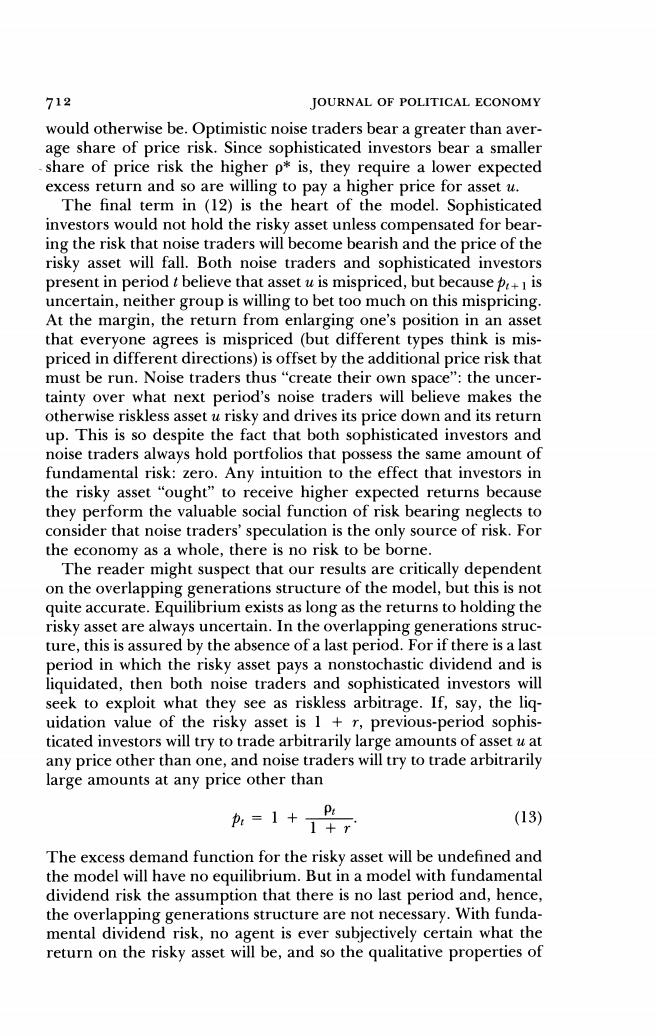正在加载图片...

712 JOURNAL OF POLITICAL ECONOMY would otherwise be.Optimistic noise traders bear a greater than aver- age share of price risk.Since sophisticated investors bear a smaller share of price risk the higher p*is,they require a lower expected excess return and so are willing to pay a higher price for asset u. The final term in (12)is the heart of the model.Sophisticated investors would not hold the risky asset unless compensated for bear- ing the risk that noise traders will become bearish and the price of the risky asset will fall.Both noise traders and sophisticated investors present in periodtbelieve that asset u is mispriced,but becausepis uncertain,neither group is willing to bet too much on this mispricing. At the margin,the return from enlarging one's position in an asset that everyone agrees is mispriced (but different types think is mis- priced in different directions)is offset by the additional price risk that must be run.Noise traders thus "create their own space":the uncer- tainty over what next period's noise traders will believe makes the otherwise riskless asset u risky and drives its price down and its return up.This is so despite the fact that both sophisticated investors and noise traders always hold portfolios that possess the same amount of fundamental risk:zero.Any intuition to the effect that investors in the risky asset "ought"to receive higher expected returns because they perform the valuable social function of risk bearing neglects to consider that noise traders'speculation is the only source of risk.For the economy as a whole,there is no risk to be borne. The reader might suspect that our results are critically dependent on the overlapping generations structure of the model,but this is not quite accurate.Equilibrium exists as long as the returns to holding the risky asset are always uncertain.In the overlapping generations struc- ture,this is assured by the absence of a last period.For if there is a last period in which the risky asset pays a nonstochastic dividend and is liquidated,then both noise traders and sophisticated investors will seek to exploit what they see as riskless arbitrage.If,say,the liq- uidation value of the risky asset is 1 r,previous-period sophis- ticated investors will try to trade arbitrarily large amounts of asset u at any price other than one,and noise traders will try to trade arbitrarily large amounts at any price other than A=1+, (13) The excess demand function for the risky asset will be undefined and the model will have no equilibrium.But in a model with fundamental dividend risk the assumption that there is no last period and,hence, the overlapping generations structure are not necessary.With funda- mental dividend risk,no agent is ever subjectively certain what the return on the risky asset will be,and so the qualitative properties of